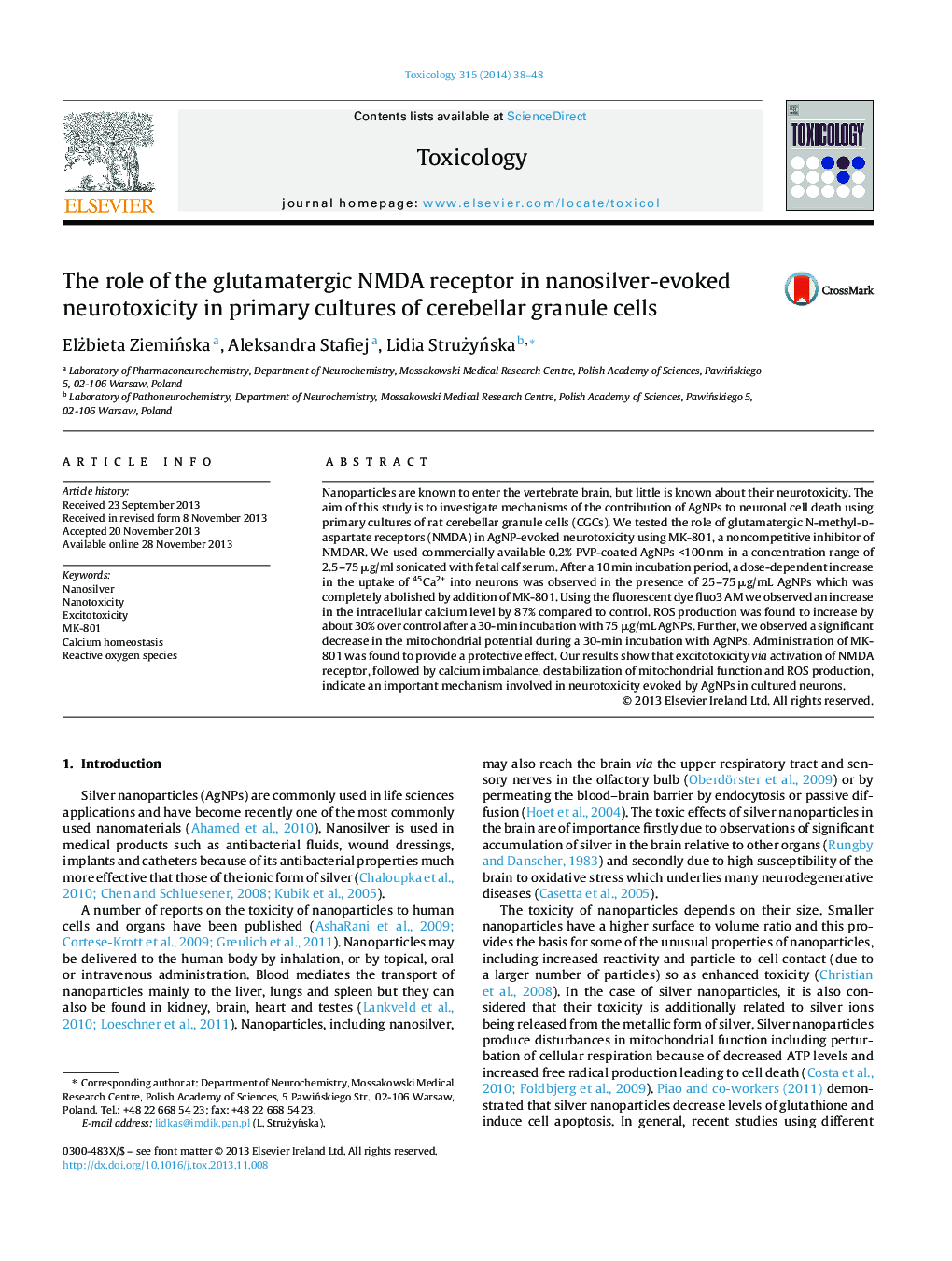| کد مقاله | کد نشریه | سال انتشار | مقاله انگلیسی | نسخه تمام متن |
|---|---|---|---|---|
| 5859283 | 1562341 | 2014 | 11 صفحه PDF | دانلود رایگان |

- Exposure of CGC to AgNPs causes increased Ca uptake and intracellular Ca imbalance.
- This leads to decreased mitochondrial membrane potential and ROS production.
- The changes are reversed by addition of a noncompetitive antagonist of the NMDAR.
- Results indicate an important role of NMDARs overactivation in AgNPs neurotoxicity.
Nanoparticles are known to enter the vertebrate brain, but little is known about their neurotoxicity. The aim of this study is to investigate mechanisms of the contribution of AgNPs to neuronal cell death using primary cultures of rat cerebellar granule cells (CGCs). We tested the role of glutamatergic N-methyl-d-aspartate receptors (NMDA) in AgNP-evoked neurotoxicity using MK-801, a noncompetitive inhibitor of NMDAR. We used commercially available 0.2% PVP-coated AgNPs <100 nm in a concentration range of 2.5-75 μg/ml sonicated with fetal calf serum. After a 10 min incubation period, a dose-dependent increase in the uptake of 45Ca2+ into neurons was observed in the presence of 25-75 μg/mL AgNPs which was completely abolished by addition of MK-801. Using the fluorescent dye fluo3 AM we observed an increase in the intracellular calcium level by 87% compared to control. ROS production was found to increase by about 30% over control after a 30-min incubation with 75 μg/mL AgNPs. Further, we observed a significant decrease in the mitochondrial potential during a 30-min incubation with AgNPs. Administration of MK-801 was found to provide a protective effect. Our results show that excitotoxicity via activation of NMDA receptor, followed by calcium imbalance, destabilization of mitochondrial function and ROS production, indicate an important mechanism involved in neurotoxicity evoked by AgNPs in cultured neurons.
Journal: Toxicology - Volume 315, 6 January 2014, Pages 38-48